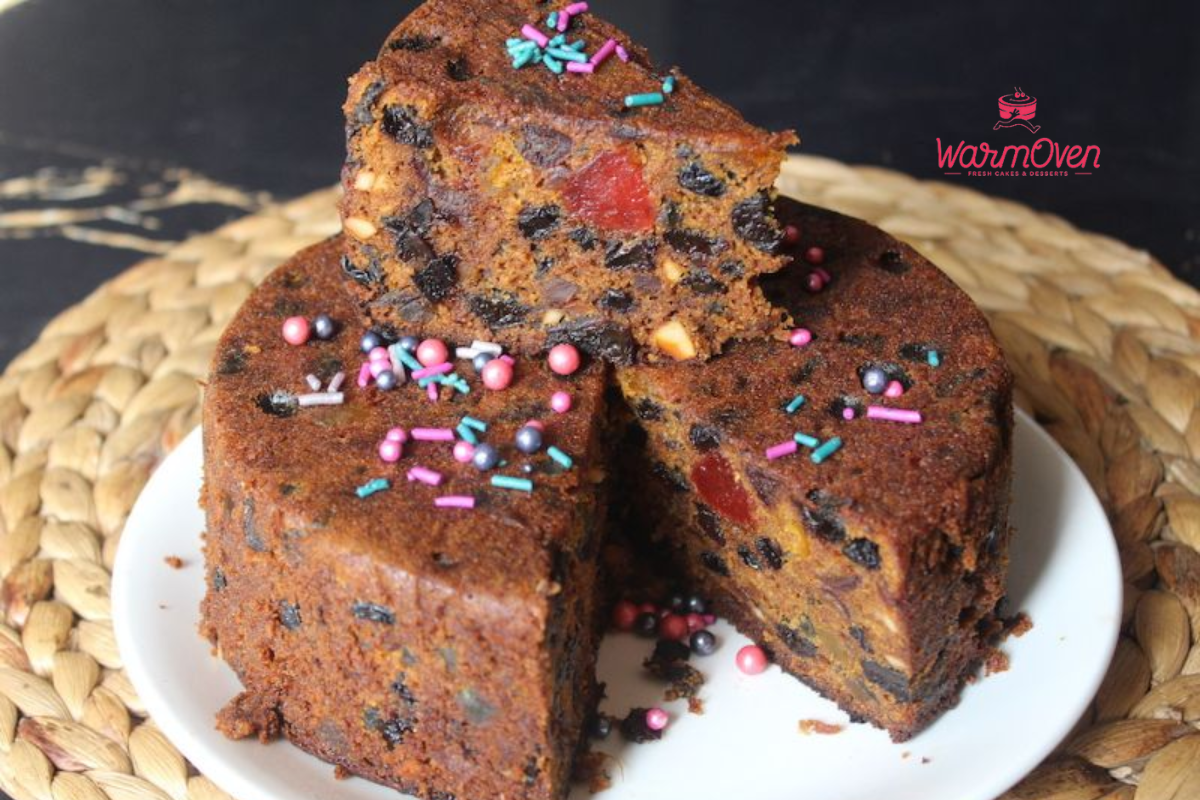What Is Plum Cake? Ultimate Guide to Healthy Baked Goodness

Plum cake has a rich history that dates back to medieval England. This sweet delicacy used to be a type of porridge made during the holiday season, filled with spices and dried fruits. By the 16th century, this hearty porridge slowly transitioned into the cake we know today.
So, what is plum cake? Modern plum cake recipes include a variety of dried fruits, nuts, and spices. You can find them in various forms, from dense and rich to light and fluffy. Some plum cakes even contain fresh fruits like apples or cherries. But wait, shouldn’t plum cake include ‘plum’?
Interestingly, the term ‘plum’ in plum cake doesn’t refer to the juicy fruit. Historically, ‘plums’ were a general term for dried fruits like raisins, currants, and prunes, which were abundant and easy to store. These dried fruits were a popular choice as they added sweetness and texture to the cake.
Want to know how to bake a plum cake? First of all, the ingredients you use play an important role. So, we’ll take a look at some key ingredients and variations.
Baking A Plum Cake: Key Ingredients and Variations
What is plum cake? It all depends on what ingredients you use to define the flavor and texture of a plum cake. The classic plum cake recipe includes flour, nuts, dried fruits (like raisins, currants, and sultanas), and a blend of spices such as cinnamon, nutmeg, and cloves. These ingredients create a rich and aromatic base for the cake.
Here are some variations for you to try out:
- Alcohol-Free Baking
Traditionally, dried fruits are soaked in alcohol to enhance their flavor. But what is plum cake without alcohol? For a non-alcoholic version, you can use fruit juices like orange or apple juice to soften these dried fruits. Just soak them for a few hours and they’ll be plump enough for the cake.
- Regional Twists
The beauty of plum cake is its adaptability. Depending on where you travel in the world, you’ll find unique twists using local ingredients and traditions. For example, some recipes might include almonds, walnuts, or cashews, while others might use figs, apricots, or dates.
- Unique Indian Versions
In India, plum cake has taken on unique forms. For example, you might find cashews and dates in plum cakes. The famous Allahabad plum cake features a delightful surprise – ‘petha’ (candied ash gourd). This is a sweet, translucent candy made from vegetables or fruits.
- Local Ingredient Adaptations
Don’t be afraid to experiment with a plum cake. You can easily adapt the classic plum cake recipe using ingredients readily available in your Indian kitchen. These can include toddy (a fermented palm drink) and ‘Kadalipazham’ bananas.
Hope you now understand, ‘What is plum cake’? It’s time to dive into the recipe and see why plum cake should be on your must-try list.
What is Plum Cake? Recipe and Preparation
Here is a simple recipe with tips on creating a healthy and delicious version at home.
Boiling Dry Fruits with Spices
To start, you’ll need a mix of dried fruits like raisins, currants, and apricots. Boil them with spices such as cinnamon, cloves, and nutmeg. This trick plumps up the dry fruits and infuses them with extra flavor.
Caramelizing Sugar
Caramelizing sugar is a crucial step. It involves meting sugar until it’s deep brown. Caramelized sugar adds a rich color and deep flavor to your cake. It’s what distinguishes plum cakes from other fruit cakes.
Mixing Dry and Wet Ingredients
- In one bowl, whisk together your dry ingredients like flour, baking powder, and a pinch of salt.
- In another bowl, blend butter and caramelized sugar until light and fluffy.
- Then, add eggs one at a time while whisking the wet mixture. After that, you can add the mashed or pureed fruits.
- Finally, gently fold the dry ingredients into the wet mixture, and your batter is ready.
Tips for Baking
For the perfect texture, bake your cake at a moderate temperature. This slow approach mixes the flavors together and prevents the cake from drying out. Test with a skewer; if it comes out clean, your cake is ready.
Tips for Storing
Plum cake improves with time. Wrap the cake in parchment paper and foil and let it sit for at least a week. This allows the flavors to develop further, giving each bite a rich taste.
Now that you know what plum cake is and how to bake one, the question remains: why choose plum cake? To understand that, we need to first examine its cultural and historical significance.
Cultural and Holiday Significance
Plum cake is closely associated with Christmas and holiday celebrations. It’s a staple in many households during the festive season. Plum cakes symbolize warmth and togetherness. For many families, making plum cake is a cherished tradition. It’s a way to connect with families and loved ones to create lasting memories.
These cakes used to be prepared months in advance so that the flavors can mature. Nowadays, there’s no need to plan months ahead. You can easily order a delicious plum cake online.
Plum cake is more than just a dessert; it’s a piece of history and a celebration of flavours. So next time you wonder, ‘What is plum cake?’ remember its rich heritage, diverse ingredients, and the love that goes into baking each piece.
In today’s world, there is a growing preference for freshly baked plum cakes over store-packaged ones. Freshly baked cakes offer a superior taste and texture. At WarmOven, we take pride in offering cakes that blend tradition with modern taste.
Made using the finest ingredients, we make sure each bite is rich, flavourful, and satisfying. For more delightful baked goods and custom cakes, visit WarmOven. Experience the warmth and goodness of our freshly baked treats delivered right to your doorstep.

